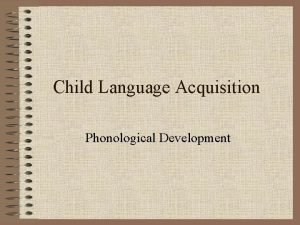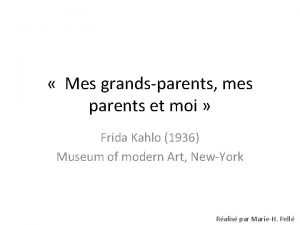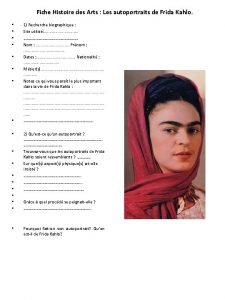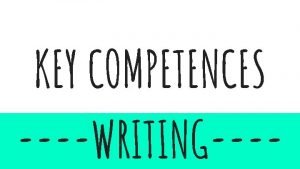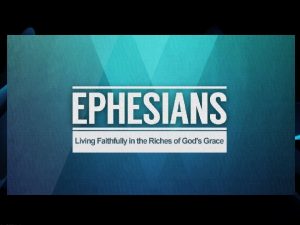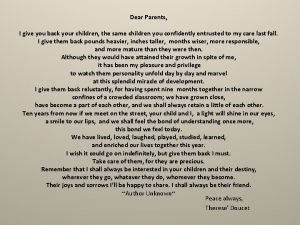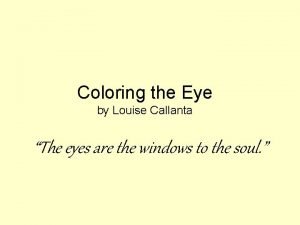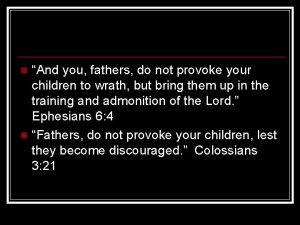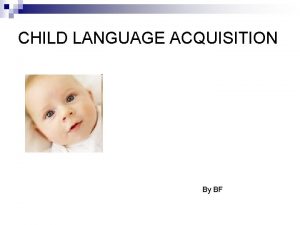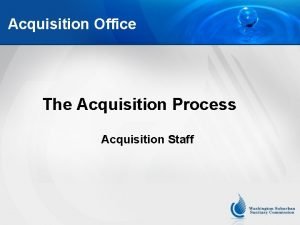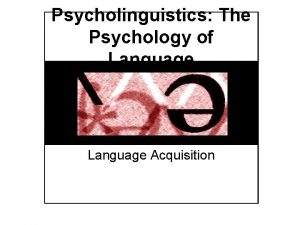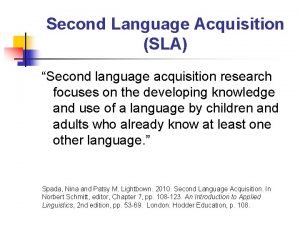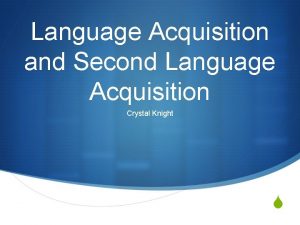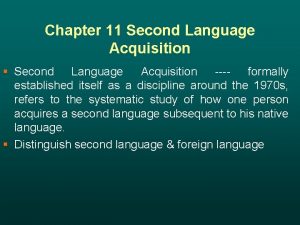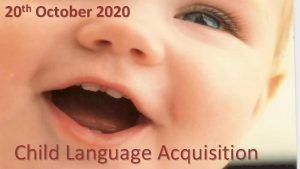Child Language Acquisition A parents guide to the











- Slides: 11

Child Language Acquisition A parents guide to the facts By RK

Definition of Child Language Acquisition (CLA) Refers to the processes, both internal and external that a child must move through in order to gain a knowledge for a spoken and written language. Leading to the ability to appropriately and efficiently use language in everyday life.

The Stages of CLA The acquisition of language is separated into 5 separate stages, grouped according to level of development and ability. These stages are: 1. Pre Verbal stage (0 -11 months) 2. Babbling stage (7 -11 months) 3. Holophrastic stage (11 -18 months) 4. Telegraphic stage (1. 5 -2. 5 years) 5. Multi word stage (2. 5 years +)

Stage 1 Pre Verbal stage The Pre verbal stage, begins at birth and lasts for approximately 11 months. During this stage children begin to communicate soundlessly with actions. It is during this stage that children begin to acquire a knowledge of key aspects of the language they will eventually master. When children are presented with a particular stimulus, they make an attempt at communicating, to display arousal for the stimuli. This could include, sucking on ones ‘dummy’, crying, hand movements etc.

Stage 2 The Babbling stage ranges from 7 to 11 months. During this stage children begin to start using ‘single consonant/vowel syllables repeatedly’ in order to communicate. Children also learn pitch, and use it accordingly, depending on who the ‘babbling’ is directed to, or the urgency of the situation. For example, a louder higher sound, when in pain, or urgent need of something. An example of communicative language in the Babbling stage may be ‘dada’ when directed at a male perhaps. During this stage the larynx is developing in order to allow speech. Words are not properly fluent or legible, but the understanding is there, when directed at a particular person or stimulus. During this stage, language(if not fluent) is beginning to be used in order to communicate. Children in this stage are also beginning to further understand their particular language, and can distinguish their own language sounds from a foreign one.

Stage 3 Holophrastic or One Word stage The Holphrastic (or one word) stage spans from 11 to 18 months. During this stage, concrete words are developed, as part of the childs lexicon (or vocabulary). These words are most likely common words, used in everyday life and interaction. The most common of these may be ‘Mummy’, ‘Daddy’ ‘Cookie’ etc. The beginning of the ‘concrete’ remembering and usage of these ‘common words’ starts towards the childs first year of life. The ability to understand orders and requests emerges. For example ‘no’ means ‘don’t do that’ and this order can be properly understood and obeyed. Requests and demands can be properly understood (in most cases) using these concrete words, in conjunction with facial expressions and hand gestures. For example, a child pointing at a juice bottle and exclaiming ‘Juice!’, would be interpreted as the child wanting the juice.

Stage 4 Telegraphic or Two Word stage The Telegraphic or two word stage spans from 1. 5 years to 2. 5 years. During this stage a childs lexicon holds approximately 50 different words. During this stage the child begins to use ‘two word utterances’. Small sentences, gramatically incorrect and perhaps missing information, for example ‘want cookie!’. During this stage, ‘word order’ is learnt. For example, words are used in correct order, despite the overall sentence having information missing. During this stage, children may feel the need to create nonsense words or sylables to substitute unknown words, or words they do not know. For example ‘me want jubadujuju’. (This is a real life example, in which my little brother would refer to “orange juice” as jubadujuju, because he couldn’t say orange juice. ) During this stage, emotive language is also learnt and used to effectively convey feelings, and well as the emerging of the ability to remember and follow one-two step instructions. And finally, children, learn possesive language, and can recognize beloning. For example ‘Johnnys ball’ or ‘Mummys car’.

Stage 5 Multi Word stage The Multi word stage spans from 2. 5 years onwards. During the start of this stage, children can communicate using several or more words, as part of a communicative sentence. They begin to grasp the idea of structure, eg. ‘want’ goes before the object of longing. (I WANT the candy), as well as proper referal, eg. ‘I want’ not ‘Me want’. Utterance length increases rapidly. Children can use language to communicate specifically, unlike the previous stages, where commands were fragmented. From this stage onwards children go on to adequately aquire language techniques and verbal development.

Examples of Language during each of the five stages: Pre Verbal: No word utterances expected Babbling: small repeated morphemes, usually based on real words. Eg. ‘mama’, or ‘gaga’. Holophastic: Properly pronounced single words are expected during this stage, with some nonsense words included. Eg. ‘Mummy’ ‘Apple’ or ‘Dog’. Usually used in conjunction with hand movements , in order to communicate. Telegraphic: Short sentences or ‘two worded’ structures are expected here. Where the child communicates using more than one word. Eg. ‘Want toy’, meaning they want the toy. Substitute words are also used. Eg. ‘gaga’ if the child cannot properly pronounce, or does not know ‘grandma’. (another real life example, where I could not say ‘grandma’, I still refer to her as ‘gaga’ to this day) Multi Word: Properly legible and fluent language can begin to be used. Comprising of several or more words. ‘I want some water’. As opposed to ‘want water’ which would perhaps be displayed in the telegraphic stage.

FAQ regarding CLA Q. How can I encourage my Childs language development? A. The best way to encourage a child’s language development is interaction. Communicating with your child, through books and simple questions, is the best way to further their lingual development. Point out objects, and ask your child to copy. Ask questions, about things they can see, or hear or smell. Sometimes, these kinds of questions will require you to help them with an answer, which furthers the learning process, if not just language, by you answering, and your child mimicking you, and remembering. Q. Is it okay for me to constantly correct my child, when they say something wrong? A. If you are constantly correcting your child, this may affect self esteem and stunt language development. To avoid them feeling discouraged, try not to correct your child on everything they say. Or if they use a word the wrong way, or incorrectly pronounce a word, don’t correct them, but use that word in a sentence yourself, directed at your child. This way, they don’t feel like you are ‘criticizing’ all the time, but they learn their mistakes their own way.

Further Enquiries For Parents Kidspot Provides an overview of all stages of development in children from birth. Including behaviour, eating and sleeping patterns, aswell as language development. http: //www. kidspot. com. au/Development-1 ---2 -years-languagedevelopment+78+26+article. htm University of Michigan website: A basic overview of child language acquisition, and its sub stages. Including a detailed description of what to expect in terms of language from your child during each stage. http: //sitemaker. umich. edu/nicolesling/home Macmillan English Language VCE units 1& 2
 Krashen's monitor model
Krashen's monitor model Phonological development in child language acquisition
Phonological development in child language acquisition Frida kahlo famille arbre généalogique
Frida kahlo famille arbre généalogique Parents parents
Parents parents Fiche histoire des arts frida kahlo
Fiche histoire des arts frida kahlo Corso di laurea in scienze della formazione primaria
Corso di laurea in scienze della formazione primaria Lack of communication between parents and teenager
Lack of communication between parents and teenager Put the verbs in the postcard into present perfect tense
Put the verbs in the postcard into present perfect tense Fathers do not provoke
Fathers do not provoke Dear parents i give back your child
Dear parents i give back your child When does baby eye color change
When does baby eye color change Fathers do not exasperate your children
Fathers do not exasperate your children

